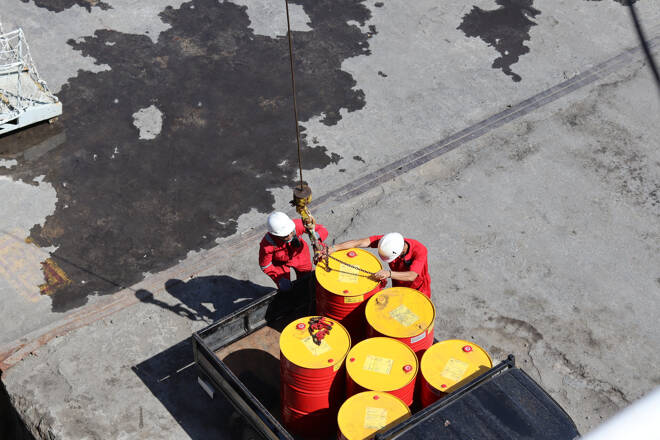Energies Start The New Year Stronger: What’s Next?
By:
Crude oil and natural gas have performed better in the opening days of 2024 amid a somewhat better outlook for demand.
Apart from demand possibly rising further in the next few months, traders of oil in particular have noted attacks on shipping in the Red Sea and instability in Libya, a relatively large producer of oil. Meanwhile there is no indication of a significant expansion of drilling in the USA. This article summarises recent events affecting oil and gas then takes a brief look at the charts of Brent Crude (symbol ‘UKOIL’) and natural gas (symbol ‘XNGUSD’).
The likelihood of a severe recession this year reduced sharply in 2023 as GDP growth in the USA was higher than expected, especially in the third quarter. Growth in Q3 2023 was 4.9%. China’s growth in the last several quarters also hasn’t been as bad as anticipated early last year:
The result for the third quarter of last year was 1.3% against 1% expected. Better Chinese growth is important primarily for oil because China is the largest importer of the commodity, so usually as the economy there performs better, the price of oil will also do better. Traders are likely to monitor closely the next release of Chinese GDP for the fourth quarter on 17 January.
The overall situation of supply and demand for both oil and gas is somewhat ambiguous. Considering oil firstly, there’s no indication currently of a significant expansion of American production:
Despite the price of oil remaining relatively high and the USA’s strategic reserve running low, active rigs in the USA dropped fairly consistently last year. Regulatory and environmental challenges have hampered efforts to pump more as OPEC+ continued to cut production last year. Meanwhile other non-OPEC countries have generally increased production. On balance, it seems that the balance of supply and demand for oil is cautiously negative for the price.
Gas faced significant challenges last quarter as seasonal conditions in many major consuming countries were mild on the whole. However, stocks in the USA have declined for several weeks:
This goes some way to explaining the recent upward movement by the price of gas even though stocks remain about 348 billion cubic feet higher than at the same time last year. Although early January’s weather in the USA and Canada is likely to be typical, later this month temperatures are expected to be higher than average, which would be negative for demand.
As the USA’s production of gas reached a record high last year and with the price close to lows of several years, the fundamental situation looks negative for natural gas. However, technical analysis might suggest limited scope for further losses.
Brent, Daily
TA normally considers a trend to be active until there’s evidence that it has ended, so further losses seem to be possible for oil in the medium term. However, the price recently made a higher low and doesn’t show any sign of buying or selling saturation. The main dynamic resistance in the short term which might cap gains is the 50 SMA around $80, also a psychological area. A logical first target to the downside in the medium term would be around $72.50. Movement at the end of the week is likely to depend on the dollar’s reaction to the job report.
Natural Gas, Daily
Gas’ bounce since the end of last year has so far been weaker but more consistent than oil’s. However, here there is evidence of overbought from the slow stochastic. Similarly to oil, the 50 SMA is a potentially important resistance which the price is currently testing.
The area around $2.20 is a multi-year low, so it might be challenging for the price to break through there in the near future. That would traditionally suggest a sell limit or waiting for a higher price to sell by market to derisk a trend-following trade. As above, the dollar’s movements around the NFP are the most important factor in the immediate future.
The opinions in this article are personal to the writer. They do not reflect those of Exness or FX Empire.
About the Author
Michael Starkcontributor
Michael is a financial content manager at Exness. He's been investing for around the last 15 years and trading CFDs for about the last nine. He favors consideration of both fundamental analysis and TA where possible.
Advertisement
